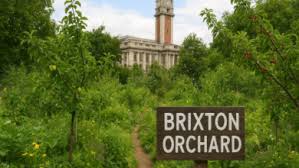Brixton Orchard: A Green Oasis in the Heart of London

Introduction
In the bustling centre of London, where concrete towers and heavy traffic dominate daily life, the presence of green spaces is nothing short of essential. Brixton Orchard is one such gem—an inspiring community project that demonstrates the power of collaboration, sustainability, and urban greening. Since its creation, the orchard has become a symbol of environmental awareness, a sanctuary for biodiversity, and a shared space for local residents.
This article explores the origins, purpose, features, and community value of Brixton Orchard, while highlighting why it remains an outstanding example of how modern cities can weave nature back into their fabric.
The Birth of Brixton Orchard
A Vision for Urban Greenery
Brixton, known for its vibrancy and cultural diversity, also faces the same urban challenges as much of London: air pollution, limited green space, and disconnection from food sources. The idea behind Brixton Orchard was simple yet revolutionary—turn an underused corner of land into a flourishing orchard that would provide fresh air, food, and community engagement.
Funding and Support
The orchard was commissioned by the Brixton Business Improvement District (BID), with strong support from Lambeth Council. Additional funding, including contributions from the Mayor of London’s Air Quality Fund, made the project financially viable. The initiative also drew expertise from organisations such as Urban Growth and the Open Orchard Project, ensuring that both environmental and community needs were considered.
Location and Accessibility
Where to Find Brixton Orchard
Situated near Brixton Hill and close to St Matthew’s Church, the orchard is perfectly placed within walking distance of Brixton’s bustling town centre. Despite its modest size, it has become a green beacon in the middle of urban life.
Open to Everyone
One of the most remarkable features of Brixton Orchard is that it is open to the public 24 hours a day, seven days a week. Unlike some restricted parks, this orchard invites everyone—residents, commuters, and visitors—to pause, breathe, and reconnect with nature.
Features of Brixton Orchard
A Diverse Range of Fruit Trees
The orchard is home to around 35 fruit trees, carefully selected to thrive in London’s climate. These include:
-
Apple trees (including rare red-fleshed varieties)
-
Cherry trees (both sweet and sour types)
-
Plum trees
-
Pear trees
-
Quince and mulberry trees
This rich variety not only provides seasonal fruit but also supports a wide range of wildlife.
Edible Hedgerows
Beyond the fruit trees, Brixton Orchard is also surrounded by edible hedgerows. These hedges are made up of plants that not only create boundaries and habitats but also bear edible berries and nuts. The hedgerows attract pollinators such as bees and butterflies, making the orchard a hotspot for urban biodiversity.
Wildflowers and Green Infrastructure
The orchard is also filled with wildflowers and plants that improve soil health, encourage pollinators, and enhance the natural beauty of the area. Together, they form a green infrastructure that contributes positively to London’s air quality and ecosystem.
The Role of Community
A Collective Effort
From the very beginning, Brixton Orchard was designed as a community-led project. Local volunteers, schools, and organisations were involved in planting the trees and continue to help with the upkeep of the orchard. This sense of ownership has created a deeper connection between residents and their environment.
Volunteering and Education
Community members can take part in workshops, planting days, and gardening sessions. These events not only provide practical knowledge about fruit cultivation but also foster intergenerational learning, as children, young people, and older residents work side by side.
A Place of Belonging
For many, the orchard has become more than a green space—it is a place of belonging. It allows residents from diverse backgrounds to meet, share skills, and engage in meaningful conversations, creating bonds that strengthen Brixton’s already rich community spirit.
Environmental and Social Impact
Improving Air Quality
London faces constant challenges with air pollution. Brixton Orchard plays a small but significant role in reducing pollution, as the trees absorb carbon dioxide and produce clean oxygen. The hedgerows also act as natural filters, trapping dust and pollutants from nearby roads.
Supporting Biodiversity
The orchard provides a habitat for insects, birds, and small mammals, encouraging urban biodiversity. With fruit trees, wildflowers, and edible plants, Brixton Orchard forms a mini-ecosystem that sustains itself while enriching the surrounding area.
Promoting Mental Wellbeing
Green spaces are vital for mental health, and Brixton Orchard has proven to be a haven for relaxation and mindfulness. Residents often describe it as a space where they can escape the pressures of city life, enjoy nature, and find calmness.
Education and Inspiration
Schools and Young People
Local schools frequently use Brixton Orchard as an outdoor classroom, where children learn about food production, the life cycle of plants, and the importance of sustainability. For young Londoners who may rarely see fruit growing on trees, this hands-on experience is invaluable.
Inspiring Other Communities
Perhaps one of the orchard’s greatest impacts is its role as a model project. Other boroughs and communities look to Brixton Orchard as inspiration for creating their own green spaces. Its success demonstrates that even small patches of land can be transformed into thriving ecosystems.
Challenges and Sustainability
Urban Pressures
Like all community projects, Brixton Orchard faces challenges. Vandalism, litter, and the pressures of surrounding traffic are ongoing concerns. However, the dedication of volunteers and the visible benefits of the orchard help maintain its protection.
Long-Term Care
Maintaining an orchard requires regular care. Organisations like Urban Growth oversee its long-term sustainability, ensuring that trees are pruned, hedges are managed, and the space continues to thrive. Without consistent management, such projects risk falling into neglect.
The Future of Brixton Orchard
The orchard continues to grow and mature, with its trees producing more fruit each year. Plans for additional community events, workshops, and partnerships with schools promise an even brighter future. As London expands, Brixton Orchard stands as a reminder that green spaces must be valued, nurtured, and integrated into urban planning.
Conclusion
Brixton Orchard is more than just a patch of greenery in South London—it is a living example of what happens when communities, councils, and organisations come together for the greater good. From improving air quality and supporting biodiversity to fostering education and social unity, the orchard offers countless benefits that ripple beyond its boundaries.
In a city often defined by speed and noise, Brixton Orchard provides a different rhythm: one of growth, nature, and community. It stands as proof that even in the heart of an urban environment, it is possible to create a space where people and nature coexist harmoniously.

